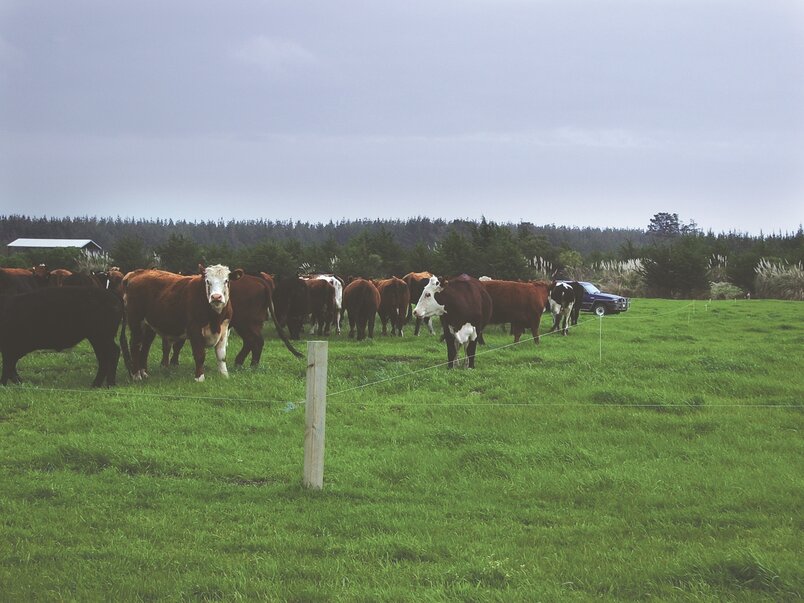Ben Hutton runs a beef finishing and trading operation on 255 ha of flat country at Dacre in Southland, turning over cattle anywhere from one week to 15 months, depending on weather and market conditions.
He’s been operating the unit for nine years, and uses Tru-Test scanning and weighing products to help him select the best genetics for trading a range of beef breeds, and finishing them at the optimum time for sale.
For the past three years he’s used the latest models of weighing equipment, the XR5000 weigh scale indicator, the HD5T load bars, XRS2 EID Stick Reader and the XRP2 panel system.
He records detailed information and it directs both his decisions on purchasing and selling at the best time. “I use it to track the weights of the individual animal classes and work out when I can unload stock.”
Ben puts on average 1000 cattle a month over his crush a year, with some months higher than others – last March the scales weighed 4500 cattle. He says he found the latest technology HD5T load bars easy to bolt in and install. “Martin (Ben’s Datamars rep) let me know to update the indicator software so it would recognise them and I haven’t had an issue since.”
The EID stick reader is used at different times of the year, and reads about 1200 cattle a year.
Ben says the XRS2 stick reader in particular influences his purchasing decisions. He travels widely to calf sales with it gathering the information he needs. “I record the breed, sex, breeding origins and what I’ve paid for it at the sale. I can use the technology to draft all of that.”
The weighing equipment enables him to monitor the performance of each animal purchased. “It tells me if the genetics are good or not and I know if I should buy from that person again.”
Ben says from his analysis he believes that there’s not a lot of difference between the middle and top ranges of beef genetics in New Zealand “but between the middle range and bottom range of genetics there is a huge difference.”
“It has allowed me to identify and buy better genetics and put an X against buying poor genetics.”
There are a number of variables in finishing beef successfully for a good profit and analysis of performance is key. “At the end of the day it is about how much you paid for them and how much you are going to get for them. You hold on to them long enough to make money.”
Using the Tru-Test weighing tools to their full extent has added to his work load, he says. “It has bought a lot more work for me” but it gives him the confidence that he’s buying on evidence.
“Some people buy on looks and by name, but I have got the proof behind me.”
He says he would recommend the tools to other farmers running similar operations, but he would advise them that getting the most out of the investment does require some time commitment.
While it’s difficult to quantify exactly what difference recording has made to his overall bottom line, he says after three years of intense recording and monitoring he’s got certainty of what beef bloodlines will be successful and who to buy from.
And with that information, he can see a time in the future when he may not have to travel so much to sales himself to analyse his purchases.
